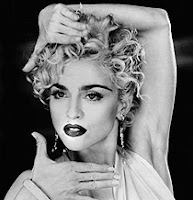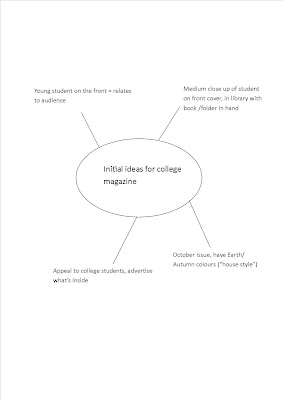http://www.ipcadvertising.com/resource/6dcz2moj66wp0swdpyx5rv3o.pdf
My Reader Profile:
My reader profile is similar to the example of NME's, mentioned above. I have included pictures of my audience's interests, such as:
- An Ipod Classic, as even though they aren't the newest model, they have a large memory suitable for storing the music that my audience would be interested in, the different genres and the different time zones of which the music is from.
- Models displaying clothes from Topshop, as they are known for selling quite vintage clothes, which is very popular with young people today.
- Gadgets such as a laptop, Playstation 3 and a camera as young people are known for having the latest gadgets
- Other things, such as clothes, shoes, chocolate and alcohol, which is very popular with young people.
I have included items that would appeal to the male audience as well as the female audience as the magazine would appeal to both. The reason my median age is 24 is because even though mainly young people would buy the magazine (teenagers), older people would sometimes buy it if they recognise who is on the front cover as it would be music they used to listen to when they were younger, therefore '24' would be the average age.
My target audience would be male and female; I think that more males would be interested in the classic rock part of the magazine and more females would be interested in the classic pop part, but mainly a mixture. The age group would vary; older people might like to read it as it would be music that they used to listen to when they were younger however, young people would also read it as many young people like old music and prefer it to current music. Overall, I think the average age appropriate for my magazine would be around 24 as that age is in between the younger audience and the older audience.
The magazine's price would be £2.99 as that way, the young audience can afford it, especially students. It'll be published once a month as because it's classic pop and rock, there aren't always going to be new updated music and stories within the magazine. However, because it's once a month, every issue could have a different classic rock band or artist on the front cover based on an anniversary, e.g. a well known album's 20th anniversary, or a certain artist's birthday month. I got the idea for my magazine from reading special editions of Q magazine and Smash Hits; when Michael Jackson died, Smash Hits produced a one-off special all about his music career. I enjoyed reading it and wanted them to make more of them type of magazines but with other artists from the past.
My target audience would be male and female; I think that more males would be interested in the classic rock part of the magazine and more females would be interested in the classic pop part, but mainly a mixture. The age group would vary; older people might like to read it as it would be music that they used to listen to when they were younger however, young people would also read it as many young people like old music and prefer it to current music. Overall, I think the average age appropriate for my magazine would be around 24 as that age is in between the younger audience and the older audience.
The magazine's price would be £2.99 as that way, the young audience can afford it, especially students. It'll be published once a month as because it's classic pop and rock, there aren't always going to be new updated music and stories within the magazine. However, because it's once a month, every issue could have a different classic rock band or artist on the front cover based on an anniversary, e.g. a well known album's 20th anniversary, or a certain artist's birthday month. I got the idea for my magazine from reading special editions of Q magazine and Smash Hits; when Michael Jackson died, Smash Hits produced a one-off special all about his music career. I enjoyed reading it and wanted them to make more of them type of magazines but with other artists from the past.










.jpg)






























